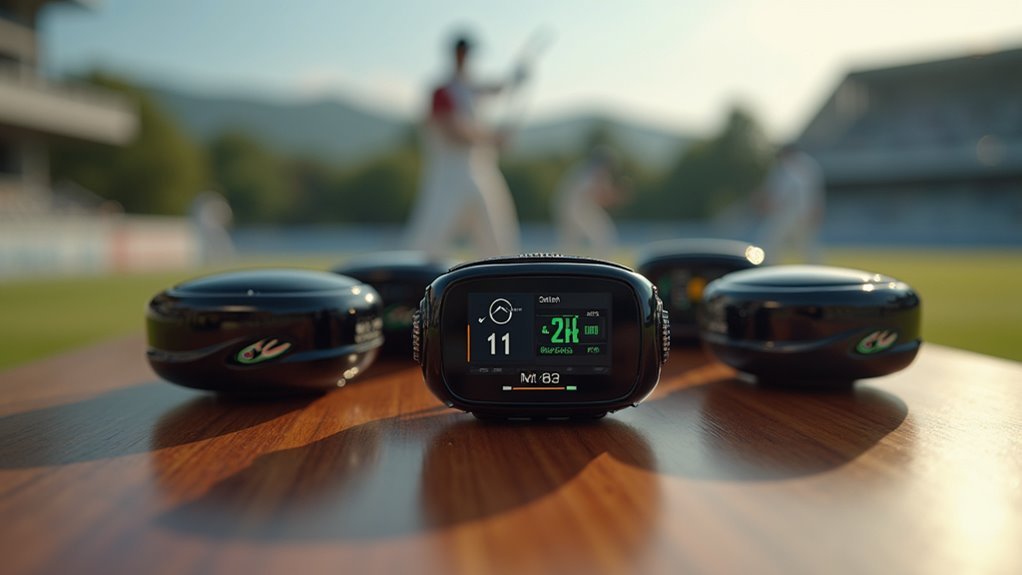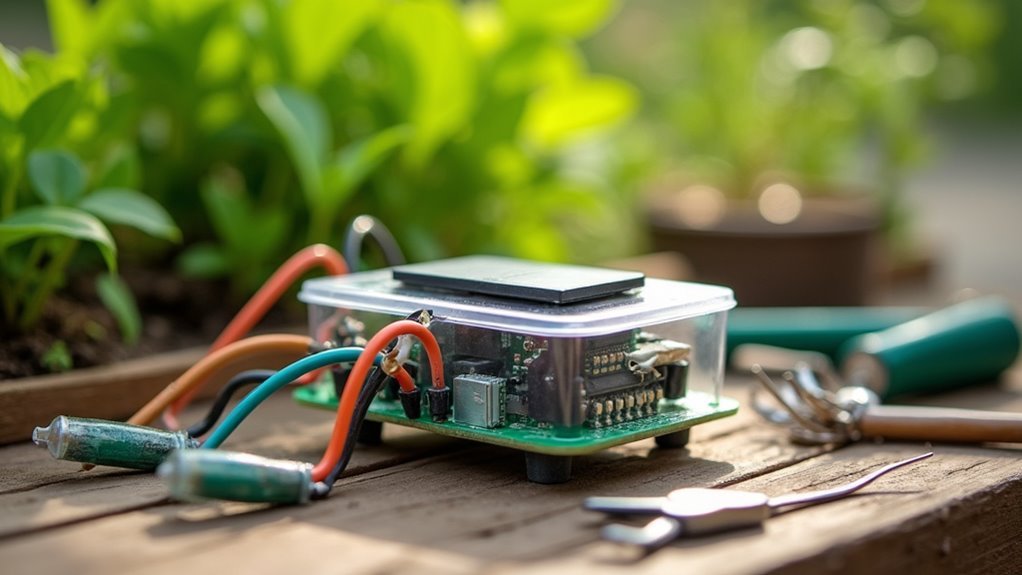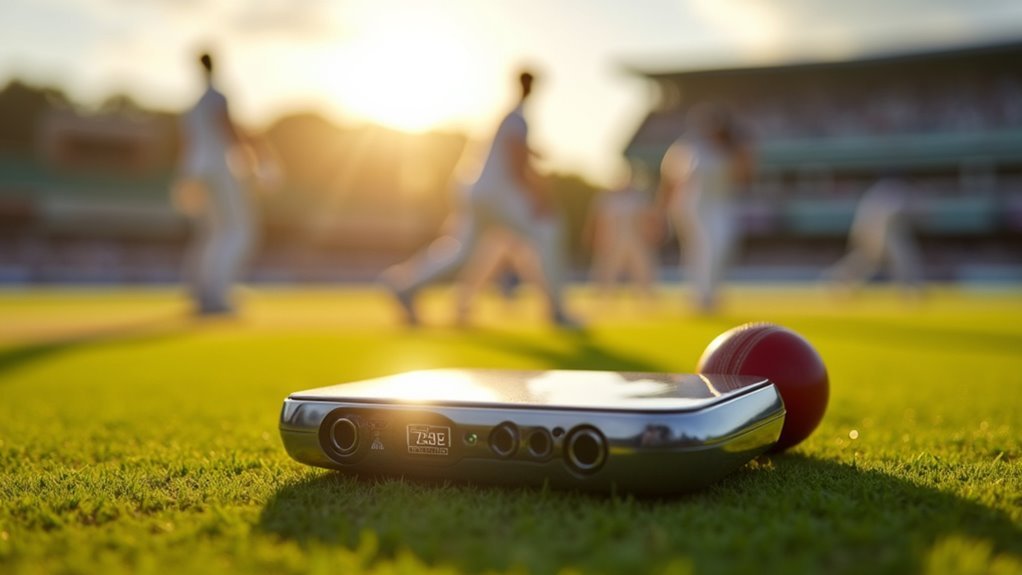You’ll need three key strategies for effective cricket monitoring devices: choose Doppler radar sensors like the HB100 (10GHz) or Bushnell speed guns (24GHz) for accurate ball speed detection, establish proper calibration techniques with reference points and controlled testing environments, and focus on cost-effective DIY assembly using affordable components with quality wiring connections. These modern radar sensors deliver commercial-grade performance while maintaining budget-friendly accessibility for amateur players and coaches seeking professional analytics capabilities.
Essential Sensor Selection for Accurate Ball Speed Detection

Several factors determine your success when selecting sensors for cricket ball speed detection, but choosing the right technology forms the foundation of any effective monitoring system.
Selecting the right sensor technology creates the foundation for any successful cricket ball speed detection and monitoring system.
You’ll want to take into account Doppler radar technology as your primary option, with the HB100 radar sensor operating at 10GHz or the Bushnell speed gun at 24GHz for enhanced measurement accuracy.
Alternatively, you can deploy beam-break sensors in a gate configuration for reliable speed measurement based on transit time. Proper sensor alignment is critical—misalignment will compromise your readings considerably.
You’ll need consistent calibration procedures using known reference speeds to maintain accuracy. Additionally, implementing image processing software helps filter background noise and guarantees precise cricket ball detection during high-velocity monitoring sessions.
Proper Calibration Techniques for Reliable Performance Measurements
Once you’ve selected your sensors, establishing proper calibration techniques becomes crucial for achieving reliable performance measurements in cricket ball speed detection. You’ll need to align all sensors correctly to track the cricket ball’s trajectory effectively, as misalignment leads to inaccurate readings.
| Calibration Step | Purpose |
|---|---|
| Reference Point Setup | Establish known speeds for accuracy verification |
| Controlled Testing | Evaluate system performance before actual use |
| Environmental Adjustment | Maintain reliability after condition changes |
Your Doppler effect-based radar technology must be sensitive enough to detect fast-moving objects while providing real-time data. You should conduct tests in controlled environments and regularly recalibrate after significant environmental conditions change. This guarantees consistent performance analysis and maintains measurement accuracy throughout extended cricket monitoring sessions.
Cost-Effective Assembly Methods for DIY Cricket Monitoring Systems

Building your own cricket monitoring system doesn’t require expensive professional equipment when you leverage affordable components strategically. You can achieve accurate speed measurement using Doppler radar technology like the HB100 sensor operating at 10GHz, which connects seamlessly to microcontrollers and IoT platforms for real-time data processing.
Your budget-friendly alternative involves positioning beam-break sensors in gate formations to track ball trajectory effectively.
Key assembly considerations include:
- Proper sensor alignment – guarantees consistent tracking accuracy
- Strategic component placement – maximizes detection reliability
- Quality wiring connections – prevents signal interference issues
- Systematic testing protocols – validates performance before deployment
Affordable semiconductor radar modules offer professional-grade capabilities at fraction costs.
Modern radar sensors deliver commercial-grade performance at consumer prices, making professional cricket analytics accessible to amateur players and coaches.
Following proper calibration steps with known reference speeds guarantees your cricket monitoring system delivers reliable measurements throughout practice sessions.
Frequently Asked Questions
What Are the Key Performance Indicators in Cricket?
You’ll track batting metrics like strike rate and average, bowling indicators such as economy rate and wickets taken, plus fielding statistics including catching efficiency and run-out success rates for thorough performance analysis.
How to Improve Batting Timing in Cricket?
You’ll improve batting timing by practicing against varied bowling speeds, focusing on your footwork, watching the ball closely from the bowler’s hand, and developing quick decision-making skills through consistent net sessions.
How to Analyse a Cricket Player?
You’ll analyze a cricket player by examining their technical skills, physical fitness, mental approach, and match statistics. Focus on batting stance, bowling action, fielding positioning, decision-making under pressure, and consistency across different game situations.
How to Get Better at Cricket?
You’ll improve at cricket by practicing regularly, focusing on fundamental techniques, maintaining physical fitness, studying the game strategically, and consistently working on weaknesses while strengthening your natural abilities through dedicated training sessions.
In Summary
You’ll achieve professional-grade cricket monitoring by selecting high-frequency sensors that capture ball speed accurately. Don’t skip the calibration process—it’s what separates reliable data from guesswork. You can build an effective system without breaking the bank by sourcing components strategically and using modular assembly techniques. Your DIY cricket monitoring device will deliver consistent results when you follow these fundamentals. Focus on precision over complexity, and you’ll create a system that rivals commercial alternatives.





Leave a Reply